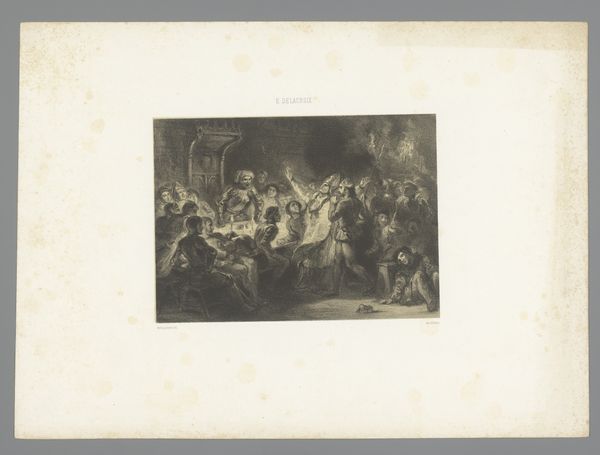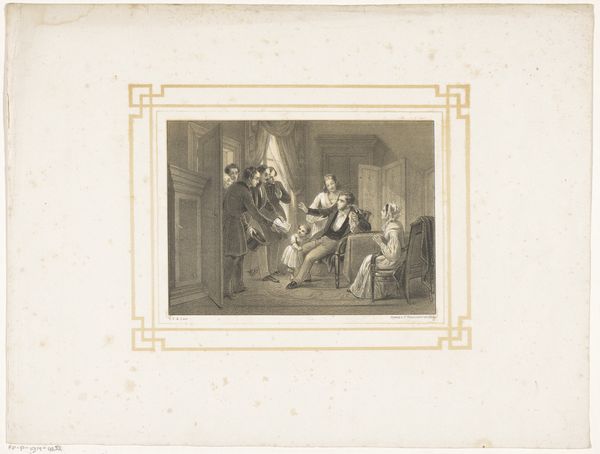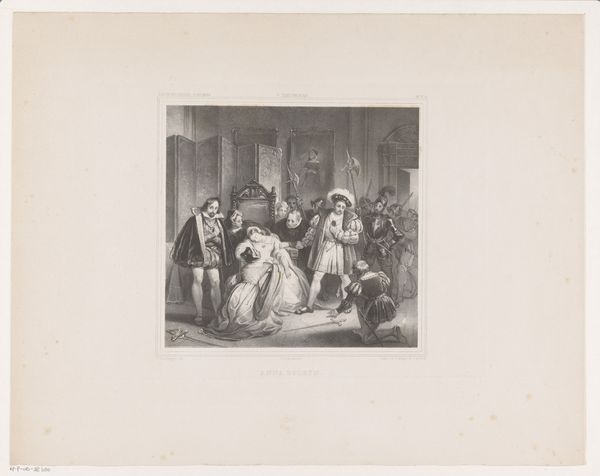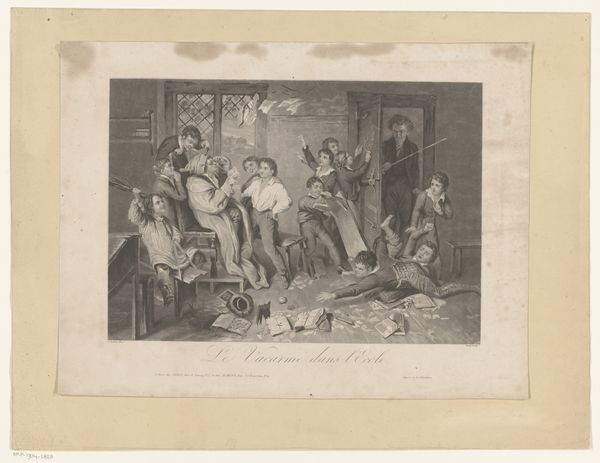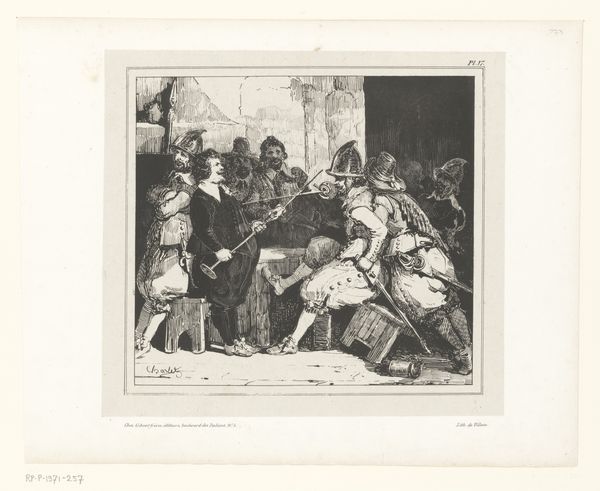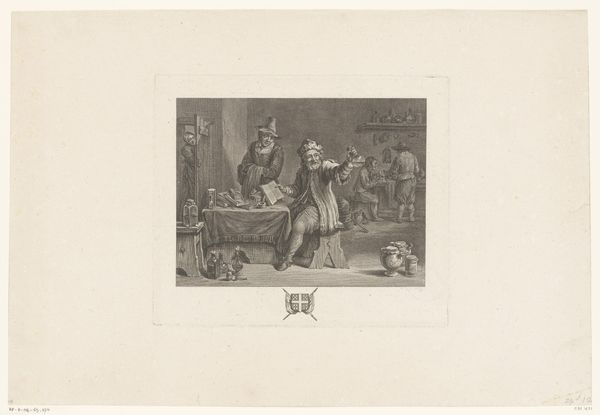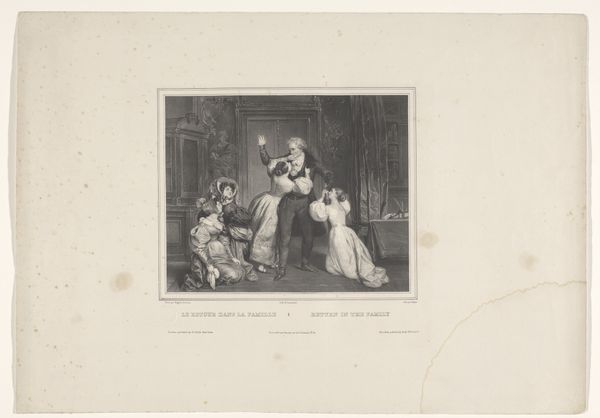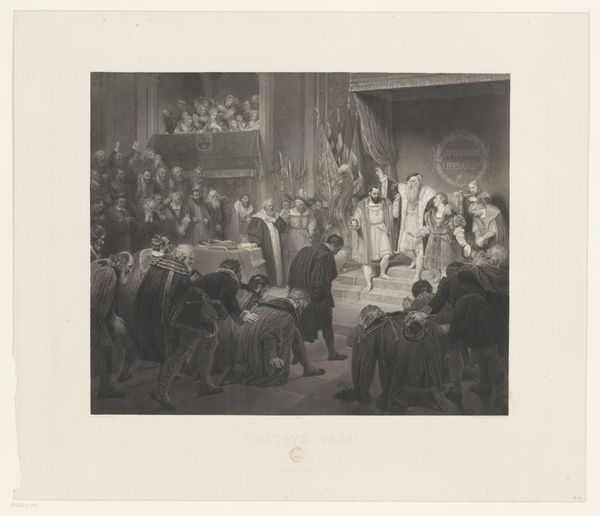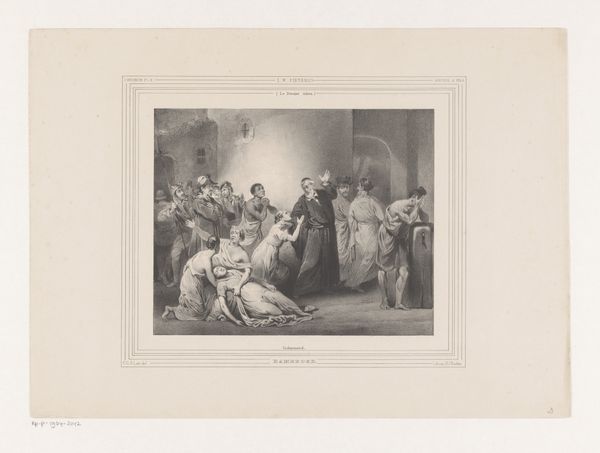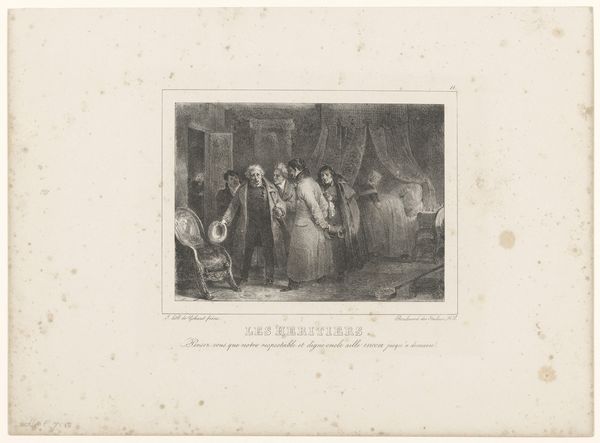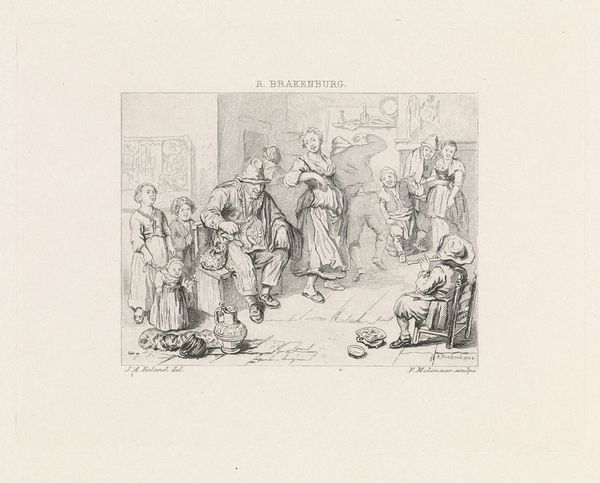
painting, watercolor
#
portrait
#
medieval
#
narrative-art
#
painting
#
watercolor
#
genre-painting
#
history-painting
#
watercolor
Dimensions: height 298 mm, width 389 mm
Copyright: Rijks Museum: Open Domain
Curator: Ah, this piece by Charles Rochussen, dating from before 1864, is called "Priester leest voor aan Karel de Grote," which translates to "Priest reading to Charlemagne". It is currently held here at the Rijksmuseum. It is an intriguing historical genre painting. Editor: Intriguing indeed. The soft hues of the watercolor give it a very dreamlike quality, almost as if it’s a faded memory. It makes me consider the story it tells in a totally contemporary context of production. Curator: Exactly! And context is everything. Rochussen lived in a period of intense nationalism. History painting, especially those depicting glorified rulers of the past, became instruments for forging national identity. He presents Charlemagne here as a patron of knowledge. Editor: Note the physical positioning, though. The priest stands reading from an elevated platform to Charlemagne and his court, which puts performance front and center. Was Rochussen trying to underscore that knowledge was power during Charlemagne's reign or how power and status influenced literacy itself? Curator: Certainly both play a role. And think of the labor involved—creating the watercolor itself and distributing this image, either as an artwork in its own right or perhaps as an illustration for popular consumption. Each action further propagates this romanticized narrative of Charlemagne's intellectual prowess. Editor: I am further curious about this technique; it resembles a drawing made to mimic an engraving that in itself looks like it emulates a medieval painting. I think it’s an interesting choice, to flatten it with the use of watercolor which is so radically different from the temporality of an empire like that of Charlemagne, based on the permanence of power. Curator: An excellent point. It allows for a greater appreciation of how Rochussen skillfully blends historical storytelling with social commentary. It urges viewers to reconsider art's role within society. Editor: Indeed, Rochussen presents a familiar tale through accessible imagery that invites its audience to examine how we all consume history, one material representation at a time. Curator: I agree; this image is both revealing and relevant.
Comments
No comments
Be the first to comment and join the conversation on the ultimate creative platform.
